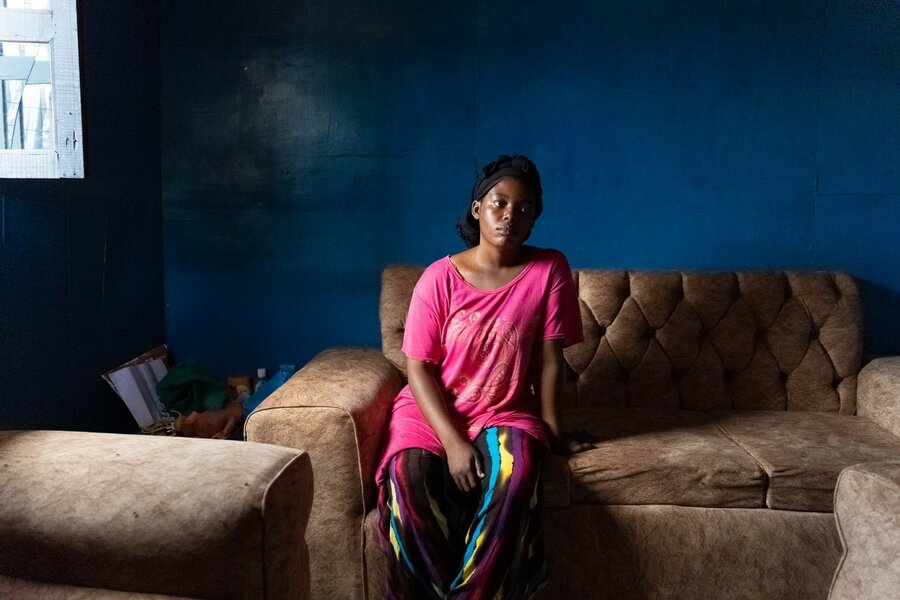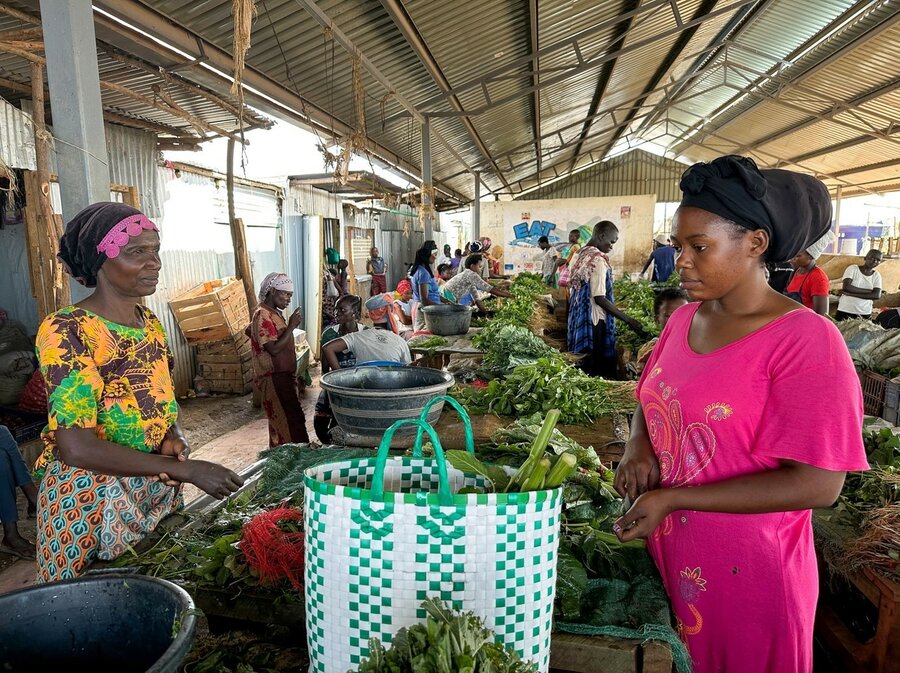Kenya: With EU help, refugees facing hunger have a lifeline
Six years ago, Armen Gakani was forced to flee her home in the Democratic Republic of the Congo (DRC). Armed militias had already tried killing her two younger siblings because they are boys with disabilities – seeing them through a lens of prejudice as harbingers of misfortune. One night, when another attack seemed imminent, she and her family of nine fled their home in South Kivu province.
“When we felt that our lives were in danger, we ran away for our safety,” she says. “We left in the middle of the night. Someone offered us a ride, but we didn’t know where we were running to.”
They managed to cross multiple borders, finally reaching Kalobeyei, a refugee settlement in northwestern Kenya.

Armen and her family have lived in the settlement ever since. The World Food Programme (WFP) has provided them and Kalobeyei’s 47,000 other registered refugees and asylum seekers with monthly cash transfers, amounting to US$16.61 per person, meeting 80 percent of people’s daily food requirements.
WFP’s assistance in Kenya and 11 other countries has been funded this past year by a special, one-time European Union donation targeting countries that were hard hit by a mix of shocks in 2022.
“When we get the money, we have to prioritize what we buy, because prices have gone up,” says Armen, whose family purchases items like maize, beans, oil, dried fish and wheat flour for making bread. The cash assistance covers most but not all of people’s daily recommended food requirements, so she spends most of her meagre wages from odd jobs to supplement the family’s diet with fish, meat and other foods.
Armen and her family aren’t the only ones challenged to fill their plates. Some 43 million people across the Horn of Africa need humanitarian assistance. Three years of searing drought, conflict and soaring fertilizer, fuel and food prices, worsened by the war in Ukraine, have all contributed to the worsening hunger landscape.

In addition to 4.4 million Kenyans suffering hunger, refugee facilities in Kenya, like Kalobeyei, host more than 600,000 people, nearly a fifth of whom have arrived over the past year.
Kenya’s refugee camps and settlements are located close to national borders, in areas that are prone to drought. Armen and her family arrived during the last major drought of 2017-18.
“We found it was dry and there was no rain for a long time,” she recalls. “The drought and harsh weather here make it hot and dusty, with no tree or vegetation cover.”
WFP provided shade nets and water so the family could grow vegetables they couldn’t find at the market.
“Although it is not easy because of water scarcity,” Armen says, “more people are able to farm, and this brings more vegetables into the market.”
The European Union’s one-time €65.5 million (US$70 million) donation targeted 11 countries in eastern and southern Africa, with the goal of addressing record needs caused by the global effects of the war in Ukraine, climate shocks, conflict, and economic pressures. Coming from the EU’s Directorate-General for Civil Protection and Humanitarian Aid Operations (ECHO), it allowed WFP to provide lifesaving assistance to refugees like Armen and her family - along with many other vulnerable people.
